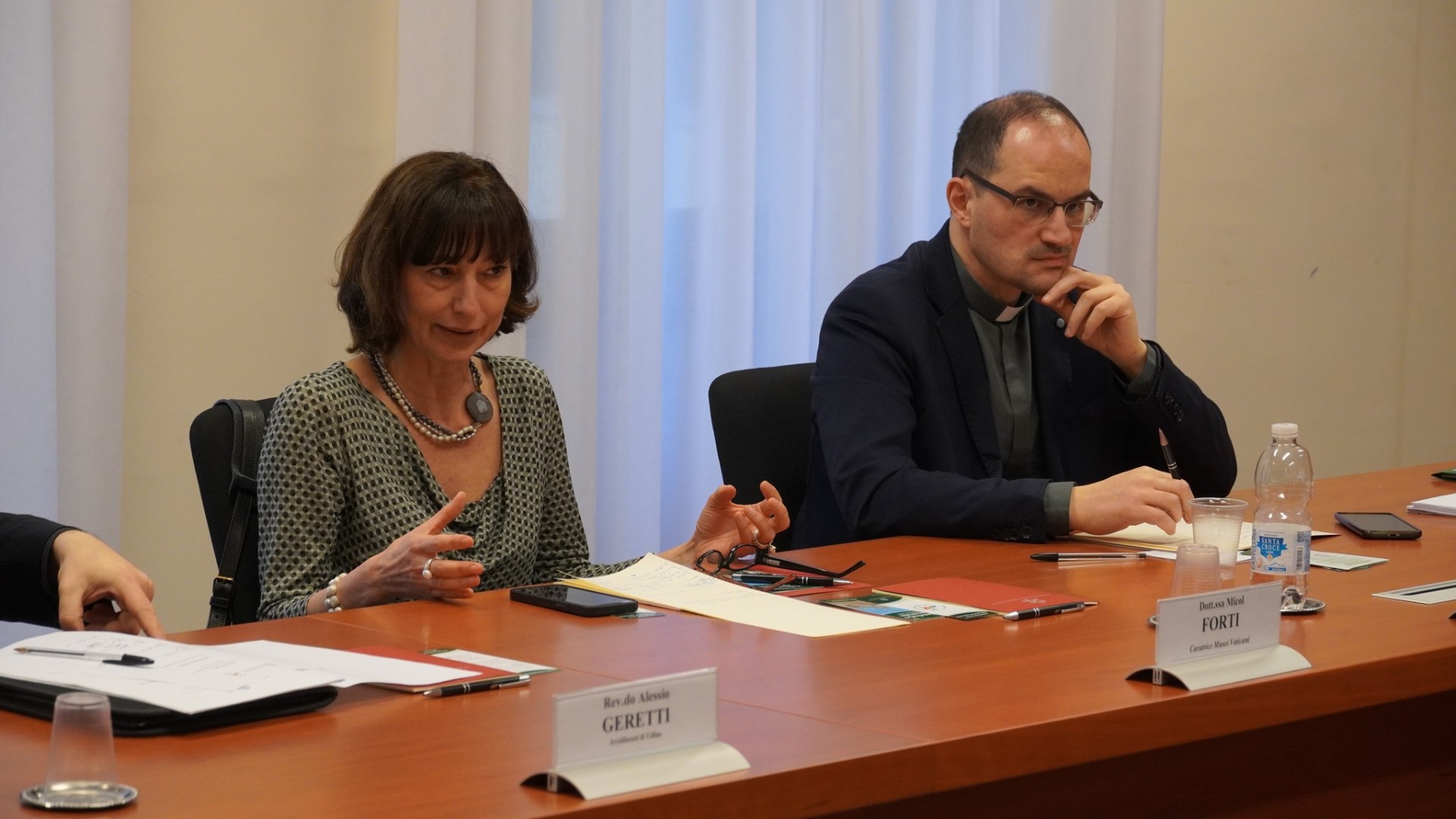One year to go to the Jubilee of Artists. Micol Forti: ‘For every artist it will be an opportunity for the highest form of dialogue’
“For artists, coming to Rome for the Jubilee will mean choosing to survey their own ultimate horizon, namely that of the Spirit”. That is the view of Micol Forti, the Director of the Contemporary Art Collection of the Vatican Museums. Exactly one year from now, thousands of artists from all over the world will be in Rome to experience the Jubilee of Artists, which will be held from 16 to 18 February 2024.
But what is the relationship between the Holy Year experience and artistic inspiration?
“The Jubilee for an artist is the opportunity to dialogue with his or her most sublime interlocutor,” explained Forti. “Art, when it is sublime, is ultimately always religious. And artists, when they are real artists, even if they don't profess a faith, or believe they don't have one, are often producers of ‘religious’ works. In fact, art has precisely that ability to grasp mystery, to embody it, to make it welcoming through shapes, sounds, colors, words."
An artist, therefore, is someone who tries to make the ‘unsayable’ visible and so artists themselves have to be nourished. “This is the great strength, the extraordinary and mysterious ability to ‘create’, which the human artist shares with the original Creator, who is God.” Paul VI described artists as ‘poets’ and ‘prophets’, today Pope Francis defines them as ‘children’ and ‘prophets’.
“I believe that this innate childlike quality, the artist's instinct for joy, the ability to see beyond, and see more deeply, to ‘grasp’ the meaning beyond mere rationality, is an absolute mystery and a great act of faith for each of them.”
The artists, in Rome, will also be ‘Pilgrims of Hope’. Forti said: “Art is hope … all art, when it come across pain and suffering, becomes hope because in its visualization of images, words, sounds, gestures, and body movements, there is also the Resurrection. In a work of art there is the possibility of a new life which lies in overcoming that wound, that pain, that tragedy."
“Art”, continued the Director, “contains within itself the joy that lies in the embodiment of beauty, and at the same time shows the possibility of seeing beauty even when it seems not to be there. Being able to talk about suffering also means taking responsibility for the horizon of hope. Great art, even when it depicts a still life or a static landscape, always has within it this element of transfiguration into something that goes well beyond mankind."
What is true for artists is also true for the works of art that pilgrims, in 2025, will be able to view in Rome even as tourists.
“The key word is ‘contemplation’, a term which we are no longer familiar with, but which is really fundamental. It means letting yourself ‘belong’, letting yourself be welcomed by an image, a text, a piece of music, when its mystery touches us deep inside, and gives us back something that cannot be grasped with just the eyes. The chance for pilgrims coming to Rome for the Jubilee to participate in the magnificent treasures of our city will remind them that the relationship with a great work of art is never just a morsel to swallow but is rather a precious food to be savored and enjoyed."
Appreciating art, however, requires time. “Time is the great luxury of our age, but it is also the great secret to penetrating beauty, and receiving from it the hope of new life, of an improvement of ourselves and what surrounds us. That ‘slow’ time is also the time of faith. We know how faith is a constant process, it is not a goal that once obtained remains fixed. And so it is with beauty. Like faith, beauty must also be recognized over time and appreciated with love, humility and dedication."
Our hope for pilgrims is that “in the contemplation of what they will experience in entering the Holy Door, visiting the major Basilicas, walking through Rome, that they may be given back that precious space that exists between time and eternity – a space which a work of art always manages to preserve. Because the life of a work of art is much longer than our human lifespan and manages to give us the perception that there is an eternity enclosed in beauty."


